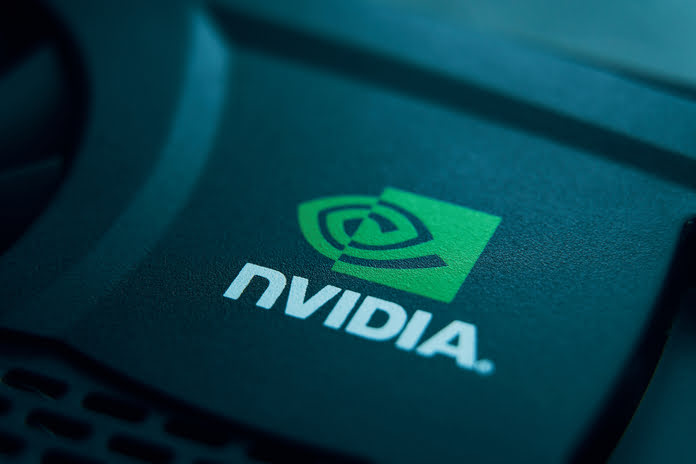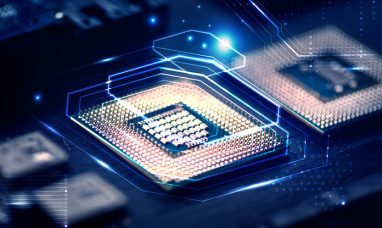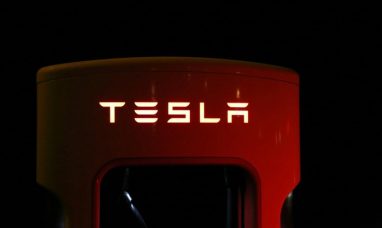Chipmaking giant Nvidia (NASDAQ:NVDA) is on track to reach a historic milestone — a $5 trillion valuation. Just three months after breaking the $4 trillion mark, Nvidia’s rapid rise underscores how artificial intelligence has become the defining force in global technology markets.
This surge not only highlights Nvidia’s leadership in advanced semiconductor design but also raises broader questions about whether the AI investment boom is sustainable — or heading toward a speculative bubble.
The Race Toward a $5 Trillion Milestone
Nvidia’s climb toward a $5 trillion valuation represents one of the fastest market cap increases in history. As of Wednesday morning, shares of Nvidia (NASDAQ:NVDA) traded near $207.80 in premarket sessions, giving the company a market capitalization of roughly $5.05 trillion based on 24.3 billion shares outstanding.
The company’s success has been driven largely by its dominance in graphics processing units (GPUs) — the hardware that powers machine learning, data centers, and generative AI tools like ChatGPT. Since early 2023, demand for these chips has skyrocketed, fueling record earnings and investor enthusiasm.
A New Tech Revolution Comparable to the iPhone Era
Nvidia’s ascent has drawn comparisons to Apple’s (NASDAQ:AAPL) trajectory during the smartphone revolution. When Apple co-founder Steve Jobs introduced the iPhone in 2007, it triggered one of the largest shifts in consumer technology ever seen. Apple went on to become the first company to hit $1 trillion, then $2 trillion, and eventually $3 trillion in market value.
Now, Nvidia’s $5 trillion valuation signals that artificial intelligence could represent an equally transformative era. The company’s products have become central to everything from cloud computing to autonomous vehicles and robotics — making Nvidia the cornerstone of the AI infrastructure.
Major Investments and Global Partnerships
In recent weeks, Nvidia (NASDAQ:NVDA) has made several major announcements that reinforce its market dominance and justify its valuation surge. CEO Jensen Huang revealed $500 billion in new chip orders, demonstrating unprecedented demand across industries.
The company also unveiled a $1 billion investment in Nokia (NYSE:NOK) to collaborate on next-generation 6G technology, and a strategic partnership with Uber Technologies (NYSE:UBER) to advance robotaxi development. In the public sector, Nvidia is working with the U.S. Department of Energy to build seven new AI supercomputers, further expanding its role in national infrastructure.
Additionally, Nvidia plans to invest $100 billion in OpenAI, adding at least 10 gigawatts of Nvidia-powered data centers to scale computing capacity for ChatGPT and future AI models.
Growing Warnings About a Possible AI Bubble
Despite Nvidia’s explosive growth, not everyone is convinced the momentum can last. Officials at the Bank of England and the International Monetary Fund have both cautioned that inflated tech valuations could pose systemic risks if the AI hype fades.
While Nvidia’s fundamentals remain strong, analysts warn that the AI stock rally may be running ahead of real-world adoption rates. The company’s $5 trillion valuation, while remarkable, also places immense pressure on future earnings to justify such lofty expectations.
Geopolitical Tensions and Future Prospects
CEO Jensen Huang has also confirmed discussions with the Trump administration about developing new AI chips tailored for the Chinese market. The topic is expected to surface in an upcoming conversation between former President Donald Trump and Chinese President Xi Jinping, potentially impacting Nvidia’s access to one of its largest international markets.
Still, Nvidia’s $5 trillion valuation underscores how central the company has become to the global economy — bridging AI innovation, chip manufacturing, and geopolitical strategy.
Conclusion
Nvidia’s meteoric rise to a $5 trillion valuation marks a turning point in financial and technological history. While some fear the AI bubble could burst, Nvidia’s aggressive investments, partnerships, and innovation pipeline suggest it remains at the forefront of the next great digital revolution.
If current trends continue, Nvidia may not just be the first $5 trillion company — it could redefine what’s possible in the age of artificial intelligence.
Featured Image – Megapixl









